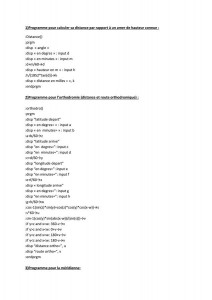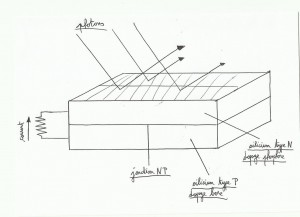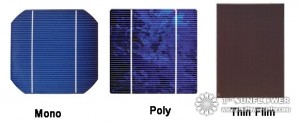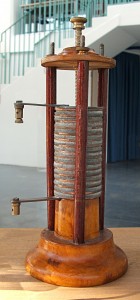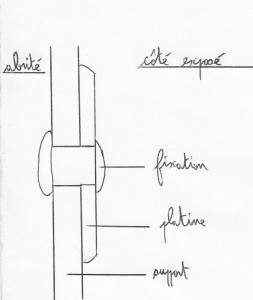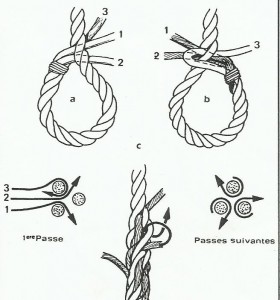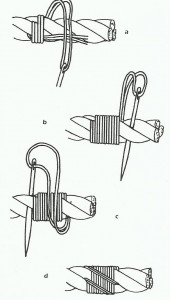For polyester boats, there is a choice of resins with different properties. This choice will depend on the fiber fabrics used, the method of manufacture or repair , desired characteristics and of course the price. The main characteristics of these resins are UV resistance, moisture resistance, elevated temperature resistance, shrinkage(volume loss on drying), thixotropy(viscosity of the resin).
1)The polyester resin
This is the most common because of its large range of use and its price. This liquid resin solidifies(polymérize)by the addition of a catalyst(organic peroxide, generally PMEC), and the start of the reaction work with an accelerator, cobalt. The accelerator is used to control the polymerization time, and catalyst function is more made to balance drying time on ambient temperature. Anyway now, for safety reasons almost all resins are pre-accelerated, cobalt is already mixed inside and the last thing to do is to add up the catalyst(add between 1 and 3% of catalyst into the resin, the more cold and damp conditions are, the more we will be close to 3% of catalyst. the average quantity is 2%). Never put too much catalyst otherwise the resin will not dry and polymerize normally(crackles, mixture of resin will heat and the bottle will melt), it will not solidify if catalyst quantity is not enough.
There are two kinds of polyester resins, isophthalic and orthophtalic resins; orthophtalic is the cheapest, but less waterproof(significant water absorption)and therefore more vulnerable to osmosis(slow and progressive infiltration of water into the polyester hull). In addition their mechanical properties are also lower. In fact for nautical things we use the iso resin(better impregnation of fabrics, better resistance to water and chemical products, so in one word it' s better!).
The polyester resins can be loaded(silica, fiber microballoons…)to increase their thixotropic skills to make filler or plaster for filling holes for exemple. It is used to impregnate glass fabrics, kevlar, but not with carbon fabrics. During fabrics impregnation, you have always to alternate a layer of roving(weft fabrics)with a mat layer(fabrics with bulk fiber). For a good finish it is best to always begin and end with a layer of mat(easier to sand), a mat layer impregnation expects two resin doses of a roving mat soaking.
The main problem with iso resin is water absorption, indeed their moisture uptake may be important, causing a decrease in mechanical properties which can lead to delamination(layers division, yeah…). To protect iso resin from water it must be isolated, with a gel coat or polyurethane paint(two-component)like a skin.
Summary: when you use iso resin, always protect the fiber with gel-coat or two-component paint, alternate mat/roving layers, polymerize with catalyst(PMEC)no more than 3%, poor adhesion on wood, use for fiberglass, Kevlar fabrics but not on carbon.
2)Epoxy resin
More expensive, but a lot of benefits. Its water absorption is very low, it has better mechanical qualities, more resistant in face with time and delamination. We also get a better weight / volume ratio, significant for racing boats for example. this kind of resin is rot-proof, it sticks on almost everything(like wood). this is the best resin! However against UV its resistance is weak. Epoxy layers provides better thermal insulation also.
To dry this time we use a hardener(generally a volume of hardener for two volumes of resin, anyway this is indicated on the box), However volumetric ration between hardener/resin must be very accurate and temperature must provide the best drying conditions, otherwise it's failing. This resin may also be loaded with silica(to control the viscosity of the resin, increase the density of the mixture), microfibers(wood sticking) or micro-balloon(Low density plaster, reinforcements in the soul to pass a bolt or run a reinforcement).
When the fabric is impregnated with epoxy resin, mat fabrics is uneeded. It can be used for carbon fabrics. The low shrinkage of this resin allows the use of fewer amounts too.
To protect the epoxy layers from UV polyurethane paint is applied over, the gel coat does not suit. In fact there is a sentence to remember for epoxy: “Epoxy sticks on everything but nothing holds on epoxy( except the two-component paints, and epoxy)”.
Summary: very water-proof, excellent mechanical properties, little shrinkage, weak against UV, expecting more things(dosage resin/hardener, temperature, humidity), used to laminate wood or impregnate carbon, mat fabrics uneeded during impregnation,much more expensive however. UV protection with polyurethane paint. Another small detail once dried it is more difficult to sand.
3)Vinylester resin
Its skills are between the polyester resin and the epoxy resin, the price too. May be laminated on the polyester , and like polyester resin we use mat fabrics.
4) Gelcoat
This is a resin made with different loads, it protects the laminate and gives a smooth final shape; in general it is pre-accelerated and hardens with a catalyst. The most of time it is white to reflect sunlight and UV for a better protection, can however add a coloring agent to give it a chosen color. There are gelcoats used in molds without paraffin and gelcoats for repair or application on the hull with paraffin(allows the gelcoat to dry in the open air).
5)Main equipment
when we work with resin we have always to foresee a little electronic scale to know precisely our quantities and a gradual pipette to have balanced mixtures, plastic bottle bottoms dry and hands and eyes protections. Against styrene gaz always wear a mask .
6)Osmosis
This is the main problem met by polyester hulls when it gets older. The detection signs are simple to notice: small blisters on the hull, vinegar scent(acetic acid) in the bilges, acetic acid can be detected when blisters are drilled. Osmosis is a chemical reaction, it is easily explained by taking the case(not very funky I admit)of a wrecked man with a lack of freshwater who drink salt water(beuark!).
Drinking water rich in salt dehydrates, because of the cell skins. This is a semi-permeable membrane which protects the molecules of the cell, it lets pass the molecules necessary for life but it's a dam for others. In fact just small molecules can cross the membrane only(oxygen, carbon dioxide, freshwater…)and large molecules(ions of the dissolved salt in the water)can not pass. If the solutions on both sides of a semi-permeable membrane have the same concentration, system is balanced and molecules will stay on their place. If concentrations are unequal, then water molecules pass from one side to an other of the membrane to restore balance, it's osmosis. So the salt water absorption creates more salt concentration on the surroundings than into the cell, to restore a balanced system the cell will “give” water to extracellular surroundings, and dehydrate(a freshwater fish dropped in the sea dies from dehydration).
For polyester hulls it is a bit the same idea, Water invades polyester and slowly destroys the resin. Why? because during the manufacture of the resin little cavities full of acid liquid are created, it happens that the catalyst used was not fully permeated all corners of the fiber. Finally in that case some water manage to cross gelcoat(the semi-permeable membrane)to decrease the acid liquid concentration in the blister. with hydrolysis there will be acetic acid, and the volume of water increases and can not get out. As fresh water is less concentrated in ions than seawater, then the osmosis reactions are even greater with freshwater(lakes, rivers).
